
The New Brunswick Stoneware Pottery as depicted in a Sanborn Fire Insurance Map drawn in 1886. The pottery is in the bottom center of the map. The rectangular kiln excavated by the Cultural Resource Consulting Group is at the upper (northern) end of the pottery.
The jug, which is one of a pair, originally belonged to Sally (Sarah) Sayward Barrell Keating Wood. The jug’s mate, now in the collection of the Maine Historical Society, originally belonged to Nathaniel Barrell, father of Sally Sayward Barrell Keating Wood.
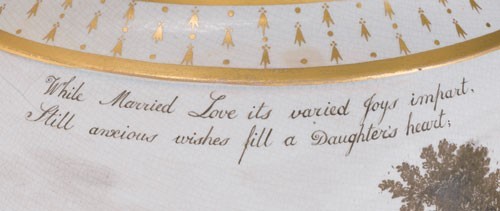
Detail of the hand-painted script on the reverse side of the jug illustrated in fig. 1. (Photo, Gavin Ashworth.)
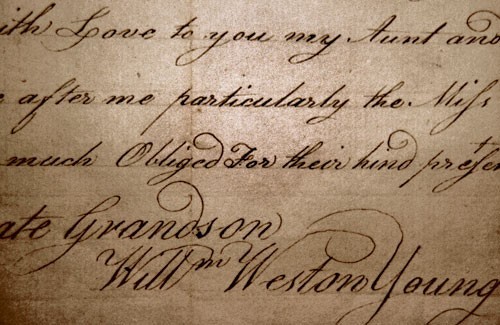
Detail of a document with the handwriting and signature of William Weston Young, a decorator at the Cambrian Pottery in Swansea, Wales, 1803– 1806. (Photo © Jonathan Gray, by permission of Sotheby’s.) There are almost identical characteristics to letters found in the hand-painted inscription on the jug: the uppercase W and L; the lowercase a, which has an upward extension of the right side; and the lowercase d, f, l, p, and t, which are all made with a single stroke. It is, of course, easier to flourish handwriting on paper than painted script on
a ceramic.

Detail of the left-to-right tableaux of Wiscasset, Maine, appearing on the reverse side of the jug illustrated in fig. 1 and its mate in the Maine Historical Society. Even though there are the minor variations in the renderings and in the intensity of pigment to be expected in painted images, the basic design elements are the same.
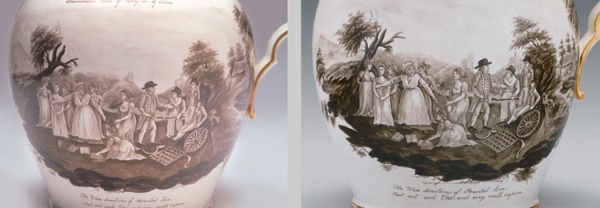
Detail of the left-to-right tableaux of the Barrell family at Barrell Grove, York, Maine, appearing on the obverse side of the jug illustrated in fig. 1 and its mate in the Maine Historical Society. As in those illustrated in fig. 4, there are minor differences in the renderings and in the pigment intensity.
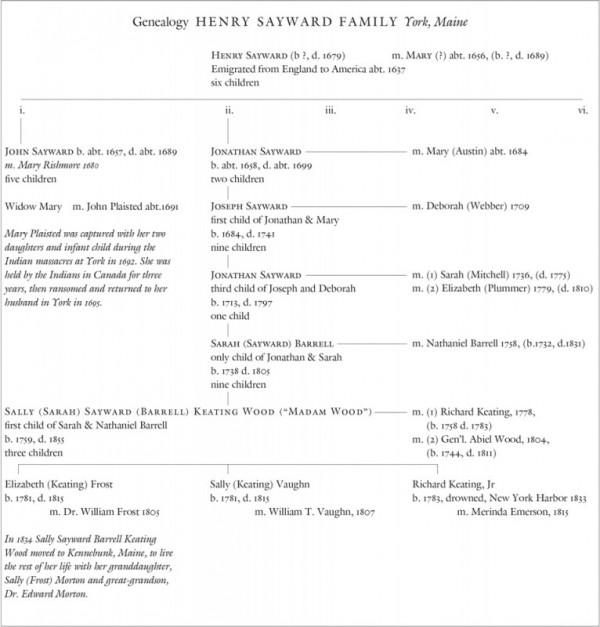
Genealogy of the Henry Sayward family, 1637-1855, of York, Maine.

Lucretia Peabody Hale (1820–1900), Judge Jonathan Sayward House and Wharf, York Harbor, Maine, late nineteenth century. Watercolor on paper. 8 7/8" x 11 1/4". (Courtesy, Historic New England/SPNEA.) Now a museum, the property is owned by Historic New England/SPNEA.

Parlor, Sayward-Wheeler House, York Harbor, Maine. On the walls, from left to right, are portraits of Jonathan Sayward (1713–1797) and his first wife, Sarah (1736–1775), both painted ca. 1760 by the same unidentified artist; and their only child, Sarah Sayward Barrell (1738–1805), painted in 1761 by Joseph Blackburn (1752–1774). (Courtesy, Historic New England/SPNEA.)
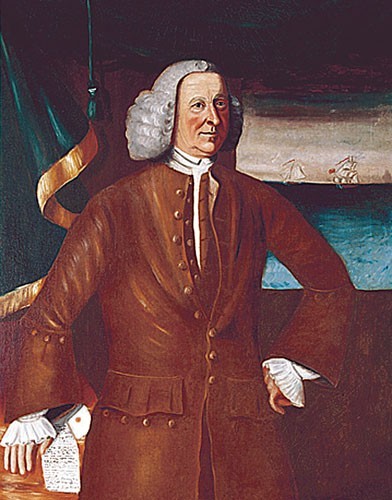
Unidentified artist, Jonathan Sayward (1713–1797), ca. 1760. Oil on canvas. 57" x 46". (Courtesy, Historic New England/SPNEA.)
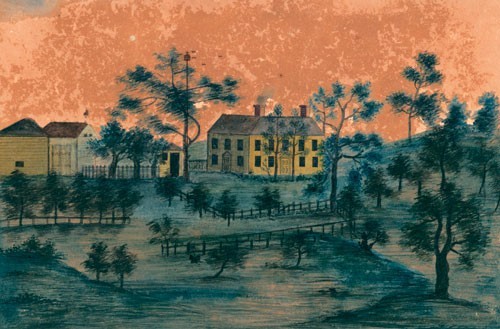
Attributed to Sophia Sewell Munroe (1788–1878), Barrell Grove, York, Maine, ca. 1800. Watercolor on paper. 6" x 8 1/2". Munroe was the first daughter of Ruth Barrell Sewell, who was the second daughter of Nathaniel and Sarah Barrell. (Courtesy, Maine Historical Society, Blaisdell Collection.)

Daguerreotype of Sally (Sarah) Sayward Barrell Keating Wood (1759-1855), probably Portland, Maine, ca. 1845. 2 13/16" x 2 3/8". (Courtesy, Maine Women Writers Collection, University of New England, Portland, Maine.)
